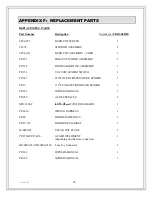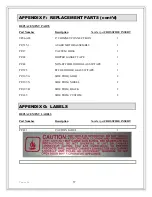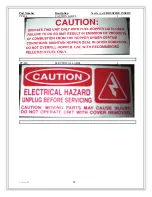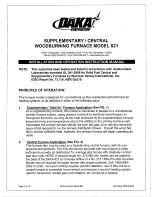
Version
4.0
52
APPENDIX E: COMBUSTION BASICS
An understanding of
Combustion Basics
will assist in resolving problems with a variety of fuels,
changing product and environmental conditions during the operational life of a stove. Just
exactly what are pellet or corn stove products suppose to do?
PROVIDE A CONVENIENT PLACE FOR STORAGE OF FUEL.
PROVIDE FOR CONTROLLING IGNITION, FUEL, COMBUSTION AIR
PROVIDE CONTROLLING HEAT FROM FIREBOX TO HEAT EXCHANGER.
CONTROL SYSTEM TEMPERATURE.
OPERATE SYSTEM EFFICIENTLY TO MINIMIZE WASTE.
ENSURE SAFETY FEATURES PROTECT USER AND SURROUNDING AREA.
Some standard terminology is required in order to discuss Combustion Basics. This terminology
is reasonably standard throughout the different industries. The following terms should be part of
a stove owner’s vocabulary and a basic understanding of these items is a must in maintaining a
stove system:
Ash content:
Refers to the non-combustible materials in a fuel, which reduce the heating value
per unit of weight.
Carbon
Dioxide:
A heavy colorless gas that does not support combustion and dissolves in water to
form carbonic acid.
Carbon
Monoxide:
A colorless, odorless, poisonous gas produced by incomplete combustion.
Incomplete burning of wood pellets will create this gas.
Combustion:
Combustion refers to the rapid oxidation of fuel accompanied by the production
of heat, or heat and light. Complete combustion of a fuel is possible only in the
presence of an adequate supply of oxygen. Chemical reaction between a fuel and
oxygen that usually takes place in air. Combustion is commonly referred to as
burning.
Combustion
Air:
The amount of air required inside the combustion chamber to create a burn.
Combustion air, for this manual, is defined as the amount of air required to
ensure 100% burn of all fuel present in the burn chamber.
Combustion
Efficiency:
Calculated measurement (in percent) of how well the heating equipment is
converting a specific fuel into useable heat energy at a specific period of time in
the operation of a heating system.







































